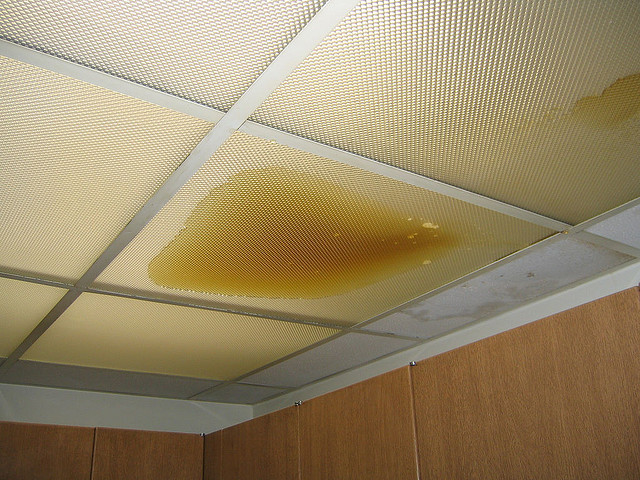Uncover Concealed Water Line Leaks: Six Tested Techniques for Detecting
Uncover Concealed Water Line Leaks: Six Tested Techniques for Detecting
Blog Article
The publisher is making a few good pointers regarding Detecting hidden plumbing leaks in general in this content below.

Early discovery of dripping water lines can alleviate a prospective disaster. In addition to conserving you money, it will certainly reduce the irritation and also irritation. The moment you locate a leak, calling your plumber for repairs is the very best solution. Some little water leaks may not be noticeable. If you can not spot it with your nude eyes, below are some hacks that assist.
1. Analyze the Water Meter
Every house has a water meter. Checking it is a guaranteed way that assists you discover leakages. For starters, turn off all the water resources. Make certain no one will flush, make use of the tap, shower, run the cleaning equipment or dishwasher. From there, go to the meter and watch if it will change. Since no one is utilizing it, there need to be no activities. If it moves, that indicates a fast-moving leak. If you spot no adjustments, wait an hour or 2 and examine back again. This suggests you may have a sluggish leakage that might even be below ground.
2. Check Water Consumption
Examine your water expenses and track your water usage. As the one paying it, you need to observe if there are any kind of inconsistencies. If you spot sudden changes, regardless of your consumption coinciding, it implies that you have leakages in your plumbing system. Keep in mind, your water costs should fall under the same variety on a monthly basis. An abrupt spike in your bill indicates a fast-moving leak.
On the other hand, a consistent boost each month, despite the same habits, reveals you have a slow-moving leak that's also gradually escalating. Call a plumber to extensively check your residential or commercial property, particularly if you feel a warm area on your floor with piping below.
3. Do a Food Coloring Test
When it comes to water intake, 30% comes from bathrooms. If the color somehow infiltrates your dish during that time without flushing, there's a leak in between the container and bowl.
4. Asses Outside Lines
Do not neglect to examine your exterior water lines too. Must water permeate out of the connection, you have a loose rubber gasket. One small leakage can waste bunches of water and spike your water expense.
5. Evaluate and also Analyze the Situation
Homeowners should make it a practice to inspect under the sink counters as well as even inside cabinets for any type of bad odor or mold and mildew growth. These 2 warnings suggest a leakage so punctual attention is required. Doing routine evaluations, even bi-annually, can save you from a major issue.
Examine for stainings and also damaging as many appliances and also pipelines have a life expectations. If you presume leaking water lines in your plumbing system, do not wait for it to rise.
Early discovery of dripping water lines can minimize a potential catastrophe. Some little water leakages might not be visible. Inspecting it is a proven means that helps you discover leaks. One small leak can lose bunches of water and spike your water bill.
If you suspect leaking water lines in your plumbing system, do not wait for it to rise.
WARNING SIGNS OF WATER LEAKAGE BEHIND THE WALL
PERSISTENT MUSTY ODORS
As water slowly drips from a leaky pipe inside the wall, flooring and sheetrock stay damp and develop an odor similar to wet cardboard. It generates a musty smell that can help you find hidden leaks.
MOLD IN UNUSUAL AREAS
Mold usually grows in wet areas like kitchens, baths and laundry rooms. If you spot the stuff on walls or baseboards in other rooms of the house, it’s a good indicator of undetected water leaks.
STAINS THAT GROW
When mold thrives around a leaky pipe, it sometimes takes hold on the inside surface of the affected wall. A growing stain on otherwise clean sheetrock is often your sign of a hidden plumbing problem.
PEELING OR BUBBLING WALLPAPER / PAINT
This clue is easy to miss in rooms that don’t get much use. When you see wallpaper separating along seams or paint bubbling or flaking off the wall, blame sheetrock that stays wet because of an undetected leak.
BUCKLED CEILINGS AND STAINED FLOORS
If ceilings or floors in bathrooms, kitchens or laundry areas develop structural problems, don’t rule out constant damp inside the walls. Wet sheetrock can affect adjacent framing, flooring and ceilings.
https://www.servicemasterbyzaba.com/blog/how-to-detect-water-leakage-in-walls/
.jpg)
Do you like reading about Locating water leaks? Put a remark below. We'd be glad to see your opinions about this blog post. Hoping that you visit us again later on. Those who liked our blog post if you please be sure to pass it around. Thanks so much for taking the time to read it.
Dial, we deliver! Report this page